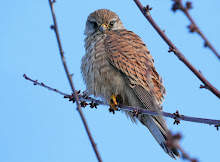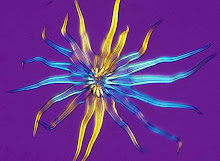The rough grassland on the old Brancepeth colliery site, never grazed or mowed, is perfect habitat for the nursery web spider Pisaura mirabilis. This female had recently enclosed her egg cocoon inside a silken tent woven around grass stems - a nursery where the vulnerable spiderlings can hatch and grow in safety.
Over 250 years ago,
the Swedish taxonomist Carl Alexander Clerck gave this species the scientific
name Pisaura mirabilis, the marvellous Pisaura. Its fraught courtship
ritual has been a source of wonder for arachnologists ever since. Males pacify
females, which are notoriously prone to cannibalism, with the gift of a fly
wrapped in silk. The larger the fly, the longer it will take to unwrap and eat,
extending the opportunity to copulate before her hunger turns to aggression.
So, there is a premium on males who are good hunters, though deceitful suitors
sometimes wrap and present small twig fragments, risking death mid-copulation
when she uncovers the fraudulent offering.
If she does accept
his advances she'll eventually produce a ball of eggs wrapped in white silk
that she carries in her jaws, slung under her body, until they are almost ready
to hatch. The egg cocoon is so large that she is forced to walk around on tip-toe,
to keep it clear of the ground.
Now, she’ll stand guard until they grow large enough to bite their way out of their nursery and take
their first steps into the outside world.



































